
-
Featured products
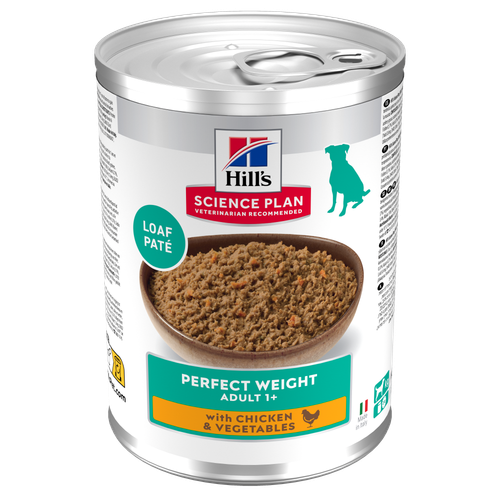 Perfect Weight Adult Dog Food with Chicken & Vegetables
Perfect Weight Adult Dog Food with Chicken & VegetablesHill's Science Plan Perfect Weight Adult Dog Food with Chicken & Vegetables ia a complete premium dog food for dogs prone to weight gain or who are slightly overweight. This savoury tinned loaf is enriched with ingredients that support healthy weight maintenance & long-lasting weight support.
Shop Now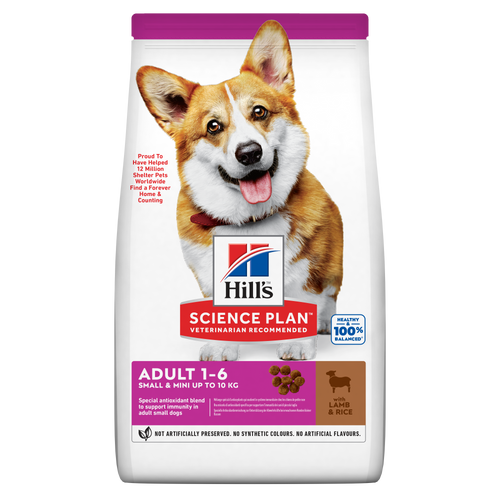 Small & Mini Adult Dog Food
Small & Mini Adult Dog FoodHill's Science Plan Small & Mini Breed Adult Dog Food with Lamb & Rice is a complete pet food, specially formulated with ActivBiome+ Multi-Benefit Technology.
Tailored nutrition for the unique needs of small dogs during the prime of their life.Shop Now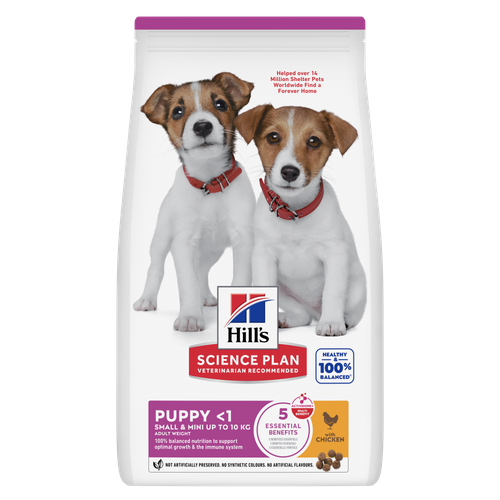 Small & Mini Puppy Dog Food
Small & Mini Puppy Dog FoodHill's Science Plan Puppy Small & Mini Breed Dog Food with Chicken is a complete pet food, specially formulated with ActivBiome+ Multi-Benefit Technology.
100% balanced nutrition to support optimal growth & the immune system.Shop NowFeatured products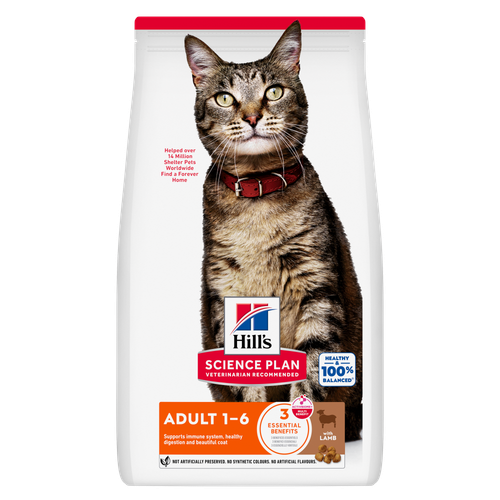 Adult Cat Food
Adult Cat FoodHill's Science Plan Adult Cat Food with Lamb & Rice is a complete pet food, specially formulated with ActivBiome+ Multi-Benefit Technology.
This food is specially formulated to fuel the energy needs of cats during the prime of their life.Shop Now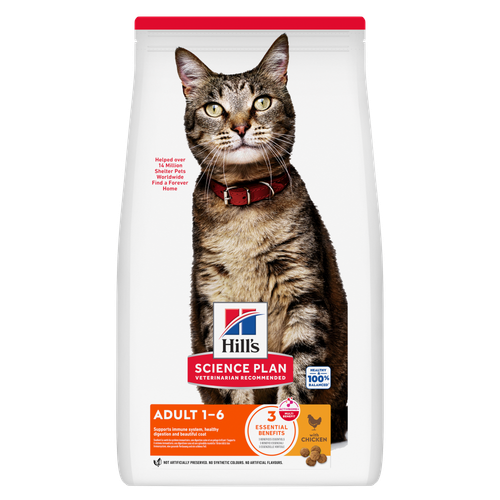 Adult Cat Food
Adult Cat FoodHill's Science Plan Adult Cat Food with Chicken is a complete pet food, specially formulated with ActivBiome+ Multi-Benefit Technology.
This food is specially formulated to fuel the energy needs of cats during the prime of their life.Shop Now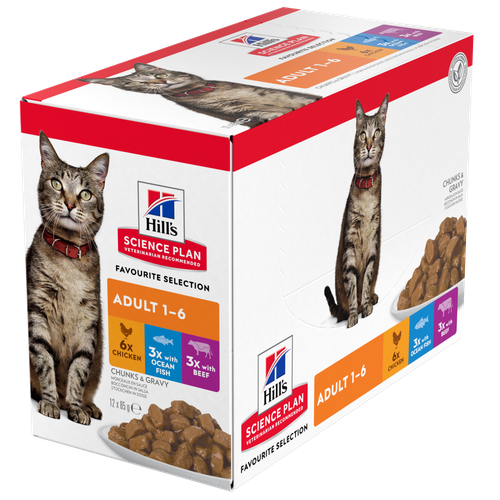 Feline Adult Wet Food
Feline Adult Wet FoodTender chunks in gravy for cats, with high-quality protein to maintain lean muscle. With vitamin E and omega-3s & -6s for healthy skin and balanced minerals to support healthy vital organs.
Shop Now -
Dog
- Dog Tips & Articles
-
Health Category
- Weight
- Food & Environmental Sensitivities
- Urinary
- Digestive
- Joint
- Kidney
-
Life Stage
- Puppy Nutrition
- Adult Nutrition
- Senior Nutrition
Cat- Cat Tips & Articles
-
Health Category
- Weight
- Skin & Food Sensitivities
- Urinary
- Digestive
- Kidney
-
Life Stage
- Kitten Nutrition
- Adult Nutrition
Featured articles Show some love with wet foods: a great choice for pets with health issues
Show some love with wet foods: a great choice for pets with health issuesShow some love with wet foods: a great choice for pets with health issues.
Read More The Right Diet For Your Pet
The Right Diet For Your PetIn people, the right diet is very important. If you are eating the wrong way for your metabolism, activity level, age and lifestyle you could end up with health issues.
Read More Proteins
ProteinsTo make a protein, amino acids are linked together in a long chain. The chain is then bundled into to a three-dimensional structure, like a tangled ball of yarn.
Read More -


Do you have a weight loss goal? If so, you've probably heard that the best way to stick to your health plans is to have a weight-loss buddy. Your dog may be the perfect choice for a fitness pal, especially if they could stand to lose a few pounds themselves. Not sure what a healthy dog should look like in the first place? Read on for everything you need to know about training with your pup.
Signs Your Dog Is Overweight
If you notice your dog has been less active lately, it may be a sign that they are becoming overweight or lacking in energy. Other signs of a pudgy pup include having to loosen their lead or collar, shortness of breath and no longer seeing an obvious "waist" behind their ribs. However, you should always talk to your veterinarian about what a healthy weight should be for your dog. Don't rely on the internet or a friend to tell you if your pet should be shedding pounds. There are genetic and environmental reasons a dog may become overweight, so your vet is the best person to determine if you should start your pup on an exercise routine or a new feeding plan. Some health conditions, such as heart disease, can also be marked by exercise intolerance, notes Wag!, so you should keep careful track of your dog's behaviour and symptoms.
Even if your dog doesn't look overweight or still seems to be fairly active, it's a good idea to confirm that they are at a healthy weight during your annual vet check up. You and your vet can also review the type, amount, and frequency of the food you are giving your pup. If your dog is a healthy weight or just starting to get a little tubby, now is the best time to act! Once your dog becomes overweight or obese, some of the related health issues may be irreversible.
Unfortunately, the Association for Pet Obesity Prevention (APOP) found that up to 54% of dogs were at risk for weight-related disorders in 2016. The health risks for just a few extra pounds include kidney disease, joint problems, skin diseases and shortened life expectancy. But the good news is taking steps toward establishing a regular fitness routine can help your fluffy companion live a longer, happier life. Remember that two pounds overweight may not seem like a lot to you, but to smaller dogs it could be the same as 20 pounds to you. It's best to not think about your dog's weight in pounds, but rather their body condition score. This is a more accurate way to tell if your dog is overweight and accounts for differences in breed types.


Tasty Tips
Finding Ways for Your Dog to Join in Your Weight Loss Goals
Including your dog in your weight loss activities can help boost your motivation to meet your health goals. The extra effort required to make a dog-friendly exercise routine might also spur you to plan out your workout ahead of time, since you'll have to figure out places and activities that will let you and your pooch be active together. Scheduling exercise can make it a more integral part of your life and increase the likelihood that you'll follow through, according to Shape. Over time, your dog will pick up on your exercise routine and give you a nudge when it's time to get busy burning calories..
The Benefits
Men's Health and other fitness gurus tout the benefits of staying motivated with a workout partner, but that buddy doesn't have to be human! Spending time with your pup has holistic benefits far beyond your waistline. Dogs have such a good influence on us that they serve as therapy and service animals for people who are blind or deaf, have limited mobility, or need emotional support for conditions such as post-traumatic stress disorder (PTSD), according to The Atlantic. Whether your dog is a working pup or just a pet, they’re your lifelong companion. Staying focused on losing weight and eating better so you can be a more energetic, healthy pet parent can be a huge personal motivator.

Running and working out is also just another form of playtime for your dog, and when you increase playtime, both you and your pet will burn calories. However, there is another perk to increasing playtime: lower stress levels. Stress triggers the release of the hormone cortisol, which causes the body to store fat deep in the abdomen, notes Prevention. Reducing stress can help you to prevent weight gain before it even happens.
Whether it is adding an extra walk each day, creating an obstacle course in your backyard for you and your dog, or just finding a local puppy play group to attend together, more time playing as a pair will likely lead to better overall health for you and your furry friend.
Don't Be Afraid to Try Something New
Swimming, yoga, and running are all great ways to burn calories and build muscle, but would you be more likely to try them if you could include your dog? There are many dog-friendly 5K races, for example most locations of the Park Run in the UK allow dogs. However, check the website to find out if your location does.
When it comes to improving your eating habits, talk to your vet about healthy snacks that might be okay for you and your dog to enjoy together (maybe in different forms, like an apple for you and some Hill's treats for them). You and your pup should also increase your water intake and stay hydrated, especially during warm weather. If stress or boredom makes you snack, throw your pup a chew toy before you head to the fridge — and see if your craving is still there after an hour of romping around with your pet.
Making the commitment to lose weight and eat better (and getting your dog to do the same) can be a bit overwhelming at first, but having your pet as your weight loss buddy should make things more fun and purposeful. Have fun walking, running, and fetching toward your best results!


One of our staff authors prepared this article for you
Related products

Hill's Science Plan Perfect Weight Adult Dog Food with Chicken & Vegetables ia a complete premium dog food for dogs prone to weight gain or who are slightly overweight. This savoury tinned loaf is enriched with ingredients that support healthy weight maintenance & long-lasting weight support.

Hill's Science Plan Puppy Small & Mini Breed Dog Food with Chicken is a complete pet food, specially formulated with ActivBiome+ Multi-Benefit Technology.
100% balanced nutrition to support optimal growth & the immune system.

Hill's Science Plan Small & Mini Breed Adult Dog Food with Lamb & Rice is a complete pet food, specially formulated with ActivBiome+ Multi-Benefit Technology.
Tailored nutrition for the unique needs of small dogs during the prime of their life.
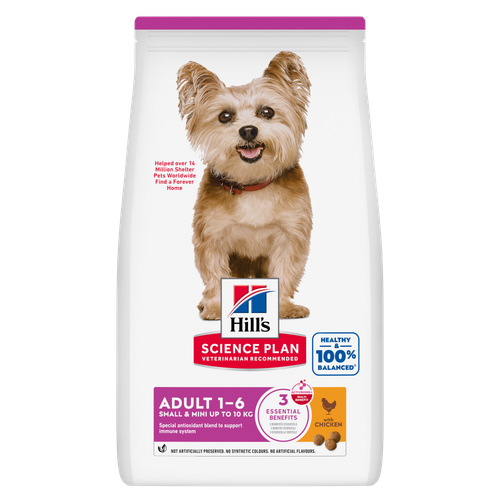
Hill's Science Plan Small & Mini Adult Dog Food with Chicken is a complete pet food, specially formulated with ActivBiome+ Multi-Benefit Technology.
Tailored nutrition for the unique needs of small dogs during the prime of their life.
Related articles

Like us, it’s essential to keep your dog’s teeth clean and healthy. So we’re giving you our 4 top tips to help you do just that.

Few things can be quite as frustrating to a dog owner as dog fleas.

Dog obesity is a significant problem - learn more about helping your dog become trimmer and healthier through improved nutrition.

Learn about the warning signs, symptoms, and treatments of pet food allergies and food intolerance in dogs and the affect on your pet.

Put your dog on a diet without them knowing
Our low calorie formula helps you control your dog's weight. It's packed with high-quality protein for building lean muscles, and made with purposeful ingredients for a flavorful, nutritious meal. Clinically proven antioxidants, Vitamin C+E, help promote a healthy immune system.
Put your dog on a diet without them knowing
Our low calorie formula helps you control your dog's weight. It's packed with high-quality protein for building lean muscles, and made with purposeful ingredients for a flavorful, nutritious meal. Clinically proven antioxidants, Vitamin C+E, help promote a healthy immune system.

